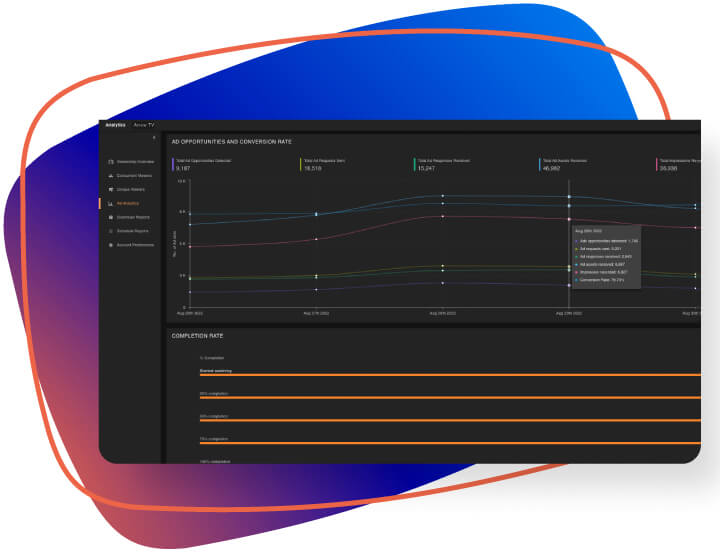frequently asked questions
If you have additional questions, get in touch
Yes. In the current system it will be a match, but it will be flagged as a “duplicate” in the system as two ads of different duration will respond positively and hence, both will be discarded. This can be improved if we can track the ad till the end and this is on our product roadmap.
Google DFP is mostly used as a campaign management system by everyone. If someone has in house ad sales, they need an ad server to manage and serve ad campaigns. It is a very powerful campaign management system that also supports integration with third-party ad networks.
DFP Small Business is free for everyone but has a limited feature set. For example, it can only support in-house ad sales, cannot connect with third-party ad networks or connect with AdX.
DFP Premium is an extensive campaign management system for tier-one customers. In our case, if the customer wants to use in-house ad sales, then they can use DFP small business and set a waterfall mechanism in Amagi THUNDERSTORM. But most customers prefer to control ad decisioning on their own and hence, they use DFP which provides a lot more flexibility and transparency on reporting.
AdX supports SSAI but only the specific version allowed by Google. Amagi THUNDERSTORM cannot integrate with AdX because it needs client-side SDK integration. Currently, AdX does not allow third-party SSAI.
Fill Rate is a mathematical term. Low fill rate also can give higher monetisation at higher CPM. And even high fill rate can give insignificant monetisation if CPM is very low. Fill Rate is used to determine how the system is performing in comparison to the number of requests made. That means, it only determines if there is a demand in the market for the inventory we possess.
Demand is driven by the profile of users watching the content. If a channel’s viewers are considered valuable for a particular segment of advertisers, then yes, it can be valuable. In this particular example, if the viewership numbers of the channel are not great, then the revenue will not be significant despite higher CPM. Typically, this works as per the multiplier effect. Try multiplying 10,000 viewers $10 versus 100,000 viewers $2 for an accurate estimate.
Currently, Amagi is channel-agnostic while serving ad impressions.
No changes are required on client-side since Amagi THUNDERSTORM only transmits the unified stream of content and ads.
No dependencies exist as Amagi THUNDERSTORM is completely device-agnostic.
Amagi THUNDERSTORM is compatible with devices that can support OTT streams.
VAST tag is just an http URL like any other with query parameters that contain user and content information.
It’s the choice made by app developers. We support every leading player, including native players.
As soon as the ad is played for the user, a beacon is fired and it gets registered in the ad network system counting as an impression. We also do quartile reporting. That means, we fire beacons for start, 25%, 50%, 75%, and 100% complete. We also check creative view and viewability to make sure ad networks register all types of beacons they need.
Yes. The THUNDERSTORM UI and console are given to customers in a self-served model. Contact us to set-up a demo.
HLS is used for Apple devices and DASH for Android. Clients prefer DASH for Android as they want to use the native player and not a third-party player like Exoplayer. If someone uses Exoplayer in Android apps, then they do not need DASH.


